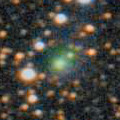
|
Now it is bright as 10.0 mag (May 10, Chris Wyatt). It is expected to brighten up to 9 mag in summer. In the Southern Hemisphere, it stays observable in good condition for a long time until the comet will fade out. In the Northern Hemisphere, it is observable only until June.
Date(TT) R.A. (2000) Decl. Delta r Elong. m1 Best Time(A, h)
May 12 19 38.24 -13 25.8 1.815 2.440 116 10.2 3:22 (341, 40)
May 19 19 33.09 -16 41.4 1.678 2.408 125 9.9 3:14 (350, 38)
|
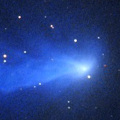
|
Now it is 11.1 mag (May 8, Juan Jose Gonzalez). It stays bright as 11 mag for a long time. In the Southern Hemisphere, it is not observable for a long time after this. In the Northern Hemispehre, it stays observable for a long time until the comet fades out. But it will be getting lower gradually after this.
Date(TT) R.A. (2000) Decl. Delta r Elong. m1 Best Time(A, h)
May 12 5 36.75 45 26.1 3.289 2.602 40 11.1 20:31 (131, 22)
May 19 5 51.70 46 37.1 3.329 2.604 37 11.1 20:39 (134, 20)
|
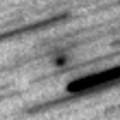
|
It brightened rapidly as expected. Now it is very bright as 10.5 mag (May 9, Chris Wyatt). It stays at 11-12 mag until June. In the Southern Hemisphere, it stays observable in excellent condition. In the Northern Hemisphere, it will be unobservable from April to June when the comet becomes brightest.
Date(TT) R.A. (2000) Decl. Delta r Elong. m1 Best Time(A, h)
May 12 22 36.86 -36 44.9 0.898 1.294 85 11.8 3:22 (316, 0)
May 19 23 7.25 -34 49.0 0.896 1.290 84 11.8 3:14 (314, -1)
|
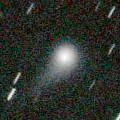
|
Now it is 11.8 mag (May 8, Juan Jose Gonzalez). It stays 12 mag for a long time until spring in 2019. In the Northern Hemisphere, it stays observable in good condition for a long time, although it becomes unobservable temporarily from mid June to August. In the Southern Hemisphere, it is not observable until September.
Date(TT) R.A. (2000) Decl. Delta r Elong. m1 Best Time(A, h)
May 12 7 48.77 54 4.3 3.068 2.761 63 12.1 20:31 (134, 45)
May 19 7 50.89 51 8.3 3.150 2.743 57 12.1 20:39 (131, 39)
|
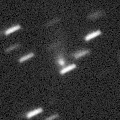
|
Now it is 14.4 mag (Apr. 8, Alexander Baransky). It will brighten up to 9 mag in summer. However, it is hardly observable when it is bright. In the Northern Hemisphere, it is not observable until late December. In the Southern Hemisphere, it is observable from July to September, but it locates in extremely low.
Date(TT) R.A. (2000) Decl. Delta r Elong. m1 Best Time(A, h)
May 12 2 59.69 26 44.8 2.450 1.463 9 12.6 3:22 (228, -9)
May 19 3 15.80 24 52.8 2.365 1.371 7 12.2 3:14 (230,-10)
|
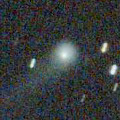
|
Now it is very bright as 12.2 mag (May 8, Juan Jose Gonzalez). It will be observable at 12-13 mag for a long time from 2017 to 2018. In the Southern Hemisphere, it will be hardly observable after this.
Date(TT) R.A. (2000) Decl. Delta r Elong. m1 Best Time(A, h)
May 12 13 20.99 56 42.5 3.466 3.800 101 13.1 21:59 (180, 68)
May 19 13 0.44 56 1.6 3.554 3.812 97 13.1 21:11 (180, 69)
|

|
The condition of this apparition is worst. It brightens up to 12.5 mag from April to May. But it is not observable at all.
Date(TT) R.A. (2000) Decl. Delta r Elong. m1 Best Time(A, h)
May 12 3 43.21 15 24.4 1.637 0.649 7 13.1 20:31 (122,-15)
May 19 4 27.46 16 55.9 1.672 0.708 11 13.9 20:39 (121,-12)
|
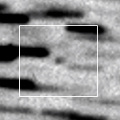
|
Now it is 14.8 mag (Apr. 26, Catalina Sky Survey). It will brighten rapidly after this, and it will brighten up to 11 mag from summer to autumn. It is observable in excellent condition in the Southern Hemisphere. It locates somewhat low in the Northern Hemisphere.
Date(TT) R.A. (2000) Decl. Delta r Elong. m1 Best Time(A, h)
May 12 21 22.75 -15 19.5 1.829 2.131 92 13.7 3:22 (315, 27)
May 19 21 34.05 -15 7.4 1.739 2.113 96 13.4 3:14 (317, 28)
|

|
Appearing in the morning sky. Now it is 14.8 mag (May 10, Toshihiko Ikemura, Hirohisa Sato).
Date(TT) R.A. (2000) Decl. Delta r Elong. m1 Best Time(A, h)
May 12 23 6.77 -1 31.6 6.157 5.784 63 13.7 3:22 (285, 18)
May 19 23 9.97 -1 2.6 6.055 5.783 69 13.6 3:14 (287, 21)
|
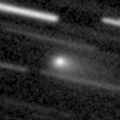
|
Now it is bright as 12.5 mag (May 10, Chris Wyatt). It will be observable at 13-14 mag in good condition from spring to summer.
Date(TT) R.A. (2000) Decl. Delta r Elong. m1 Best Time(A, h)
May 12 22 7.43 -16 17.8 1.387 1.612 82 13.9 3:22 (307, 19)
May 19 22 22.95 -14 15.6 1.345 1.617 85 13.8 3:14 (306, 21)
|
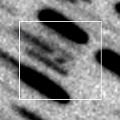
|
Now it is 16.0 mag (May 10, Toshihiko Ikemura, Hirohisa Sato). It will brighten rapidly, and brighten up to 7 mag from August to September. In the Northern Hemisphere, it will be observable in excellent condition. In the Southern Hemisphere, it will be unobservable from July to August. But it will be observable in good condition before and after tha.
Date(TT) R.A. (2000) Decl. Delta r Elong. m1 Best Time(A, h)
May 12 19 58.14 23 20.0 1.416 1.868 99 14.5 3:22 (299, 69)
May 19 20 8.82 26 38.2 1.320 1.803 100 14.0 3:14 (295, 73)
|
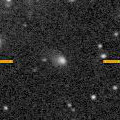
|
Now it is 15.0 mag (Apr. 19, Toshihiko Ikemura, Hirohisa Sato). It is expected to brighten up to 13-14 mag from 2018 to 2019. In the Northern Hemisphere, it stays observable in good condition for a long time. In the Southern Hemisphere, it locates extremely low until summer.
Date(TT) R.A. (2000) Decl. Delta r Elong. m1 Best Time(A, h)
May 12 19 11.34 45 47.9 3.768 4.013 96 14.9 3:22 (207, 78)
May 19 19 1.30 46 17.1 3.671 3.976 100 14.8 3:14 (182, 79)
|

|
It brightened up to 7.1 mag from May to June in 2017 (June 21, Juan Jose Gonzalez). Now it is fading. It has already faded down to 15.7 mag (Apr. 14, B. Lutkenhoner, G. Gasparovic, Y. Chen). In the Southern Hemisphere, it stays observable for a long time after this. It will never be observable again in the Northern Hemisphere.
Date(TT) R.A. (2000) Decl. Delta r Elong. m1 Best Time(A, h)
May 12 1 12.22 -42 57.9 4.547 4.257 67 15.0 3:22 (304,-28)
May 19 1 20.50 -43 0.9 4.551 4.321 70 15.0 3:14 (305,-26)
|
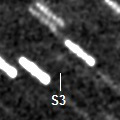
|
It is expected to approach to Sun down to 0.2 a.u. and brighten up to 3 mag in August. Now it is 16.6 mag (Apr. 22, Thomas Lehmann). In the Northern Hemisphere, it stays observable in the morning sky until early August when the comet brightens up to 6 mag. It is not observable at all in the Southern Hemisphere.
Date(TT) R.A. (2000) Decl. Delta r Elong. m1 Best Time(A, h)
May 12 0 17.62 55 23.7 2.619 2.118 50 15.3 3:22 (221, 31)
May 19 0 34.73 56 5.8 2.494 2.005 50 15.0 3:14 (221, 32)
|

|
Now it is 15.5 mag (Apr. 25, J. Drummond). It stays 15 mag from 2018 to 2019, and it will be observable for a long time in the Southern Hemisphere. In the Northern Hemisphere, it will never be observable again.
Date(TT) R.A. (2000) Decl. Delta r Elong. m1 Best Time(A, h)
May 12 12 32.98 -68 1.9 3.898 4.539 123 15.2 21:12 ( 0,-13)
May 19 12 22.47 -67 48.6 3.882 4.510 122 15.2 20:39 ( 0,-13)
|
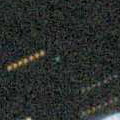
|
First return of a new periodic comet which brightened up to 13 mag in 2013. Now it is 17.2 mag (Apr. 20, Catalina Sky Survey). It will brighten very rapidly after this, up to 11 mag in summer. In the Southern Hemisphere, it stays observable in good condition all through this apparition. In the Northern Hemisphere, it is not observable at the high light from mid June to mid August.
Date(TT) R.A. (2000) Decl. Delta r Elong. m1 Best Time(A, h)
May 12 8 42.11 29 1.4 0.663 1.051 74 16.1 20:31 ( 95, 50)
May 19 8 47.09 26 18.6 0.623 0.986 69 15.3 20:39 ( 95, 43)
|

|
Appearing in the morning sky. It is observable at 15 mag in 2018, in good condition in the Southern Hemisphere. It locates somewhat low in the Northern Hemisphere.
Date(TT) R.A. (2000) Decl. Delta r Elong. m1 Best Time(A, h)
May 12 22 52.24 -16 29.4 3.223 3.085 73 15.7 3:22 (299, 11)
May 19 22 59.53 -16 4.6 3.143 3.096 78 15.7 3:14 (301, 14)
|
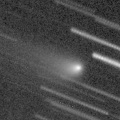
|
Appearing in the morning sky. It is fading now. But it stays 16 mag until summer. But actually, it is 18.1 mag (Mar. 23, Toshihiko Ikemura, Hirohisa Sato), fainter than this ephemeris.
Date(TT) R.A. (2000) Decl. Delta r Elong. m1 Best Time(A, h)
May 12 18 16.71 -27 3.8 2.953 3.757 137 15.9 3:00 ( 0, 28)
May 19 18 1.63 -27 34.3 2.914 3.803 147 15.9 2:18 ( 0, 27)
|
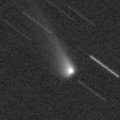
|
Fading now. It stays observable in good condition for a long time after this in the Southern Hemisphere. It is not observable until June in the Northern Hemisphere.
Date(TT) R.A. (2000) Decl. Delta r Elong. m1 Best Time(A, h)
May 12 0 53.05 -7 37.9 5.115 4.434 43 16.0 3:22 (274, -7)
May 19 0 55.30 -8 15.3 5.038 4.450 49 16.0 3:14 (277, -4)
|

|
It brightens up to 16 mag in spring. In the Southern Hemisphere, it stays observable until August, but it will be unobservable after that. In the Northern Hemisphere, it stays unobservable until June, but it will be observable in good condition after that. Its cometary activity was observed on Mar. 26 (M. Mommert, D. Polishook, N. Moskovitz).
Date(TT) R.A. (2000) Decl. Delta r Elong. m1 Best Time(A, h)
May 12 0 18.63 -14 58.0 1.519 1.241 54 16.0 3:22 (285, -4)
May 19 0 35.82 -10 43.5 1.516 1.249 54 16.0 3:14 (282, -1)
|
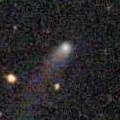
|
Now it is 16.1 mag (Apr. 15, Toshihiko Ikemura, Hirohisa Sato). It stays 16 mag for a long time from 2017 to 2018. It is observable in excellent condition in the Northern Hemisphere. It locates very low in the Southern Hemisphere.
Date(TT) R.A. (2000) Decl. Delta r Elong. m1 Best Time(A, h)
May 12 7 7.72 45 7.3 5.989 5.475 55 16.2 20:31 (124, 37)
May 19 7 9.74 45 17.3 6.088 5.487 49 16.2 20:39 (126, 31)
|

|
Now it is 16.0 mag (Apr. 6, Sandor Szabo). It will be fading slowly until summer.
Date(TT) R.A. (2000) Decl. Delta r Elong. m1 Best Time(A, h)
May 12 11 20.26 12 34.5 3.013 3.556 114 16.3 20:31 ( 19, 66)
May 19 11 21.32 12 10.7 3.107 3.559 108 16.4 20:39 ( 37, 63)
|
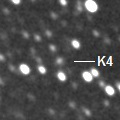
|
It was observed at 16 mag from summer to autumn in 2017. It will be observable at 16.5 mag in good condition also in 2018. It locates somewhat low in the Southern Hemisphere.
Date(TT) R.A. (2000) Decl. Delta r Elong. m1 Best Time(A, h)
May 12 23 58.53 11 38.8 3.506 2.922 47 16.4 3:22 (266, 15)
May 19 0 7.58 13 10.0 3.471 2.952 51 16.4 3:14 (266, 18)
|
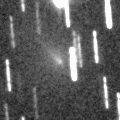
|
It brightened up to 15-16 mag in winter. Appearing in the morning sky. It stays observable at 16.5 mag for a while. It will be observable in good condition after this in the Southern Hemisphere. But it stays low in the Northern Hemisphere.
Date(TT) R.A. (2000) Decl. Delta r Elong. m1 Best Time(A, h)
May 12 22 47.72 -8 46.2 1.906 1.844 70 16.6 3:22 (294, 17)
May 19 22 40.96 -11 22.2 1.784 1.896 80 16.5 3:14 (301, 20)
|

|
Now it is 16.6 mag (Apr. 9, Toshihiko Ikemura, Hirohisa Sato). It will be fading slowly after this.
Date(TT) R.A. (2000) Decl. Delta r Elong. m1 Best Time(A, h)
May 12 10 18.24 9 6.9 9.389 9.652 102 16.7 20:31 ( 45, 56)
May 19 10 19.15 9 12.8 9.507 9.658 95 16.8 20:39 ( 56, 51)
|

|
It has not been observed yet in this apparition. It will brighten rapidly, and it is expected to brighten up to 10 mag in autumn. It will be observable in excellent condition in the Northern Hemisphere. It stays low in the Southern Hemisphere.
Date(TT) R.A. (2000) Decl. Delta r Elong. m1 Best Time(A, h)
May 12 22 9.30 -10 22.4 2.335 2.384 80 17.0 3:22 (302, 23)
May 19 22 19.38 -9 3.3 2.201 2.330 84 16.7 3:14 (303, 25)
|
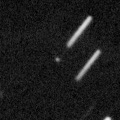
|
Now it is 16.3 mag (Apr. 15, Toshihiko Ikemura, Hirohisa Sato). It is observable at 16-17 mag from spring to summer.
Date(TT) R.A. (2000) Decl. Delta r Elong. m1 Best Time(A, h)
May 12 14 55.10 36 44.4 1.212 1.974 125 16.9 23:34 (180, 89)
May 19 14 50.69 34 12.2 1.203 1.964 124 16.8 23:02 ( 0, 89)
|

|
Now it is 16.7 mag (Apr. 15, Toshihiko Ikemura, Hirohisa Sato). It will brighten up to 15 mag in January, 2019. It stays observable in excellent condition in the Northern Hemispehre. It is observable only until June in the Southern Hemisphere.
Date(TT) R.A. (2000) Decl. Delta r Elong. m1 Best Time(A, h)
May 12 10 46.31 34 3.6 3.731 3.995 97 16.9 20:31 ( 90, 77)
May 19 10 40.21 34 25.8 3.823 3.960 90 16.9 20:39 ( 96, 68)
|
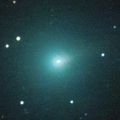
|
It brightened up to 9.2 mag from November to December (Nov. 16, Juan Jose Gonzalez). Now it is fading rapidly. It has already faded down to 16.6 mag (Apr. 12, Toshihiko Ikemura, Hirohisa Sato). It stays observable in good condition until summer when it fades out.
Date(TT) R.A. (2000) Decl. Delta r Elong. m1 Best Time(A, h)
May 12 13 37.00 4 34.3 1.362 2.277 147 16.9 22:16 ( 0, 59)
May 19 13 33.76 3 56.1 1.453 2.325 140 17.3 21:45 ( 0, 59)
|

|
Now it is 16.4 mag (Apr. 19, Toshihiko Ikemura, Hirohisa Sato). It will be fading gradually after this, and it will be fainter than 18 mag in autumn. In the Northern Hemisphere, it stays observable in good condition for a long time. In the Southern Hemisphere, it will never be observable again.
Date(TT) R.A. (2000) Decl. Delta r Elong. m1 Best Time(A, h)
May 12 23 1.41 69 4.6 7.554 7.166 63 17.2 3:22 (205, 41)
May 19 23 9.66 69 51.0 7.573 7.189 64 17.2 3:14 (204, 42)
|
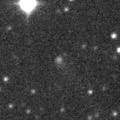
|
Now it is 16.6 mag (Apr. 21, Toshihiko Ikemura, Hirohisa Sato). It will be fainter than 18 mag in summer.
Date(TT) R.A. (2000) Decl. Delta r Elong. m1 Best Time(A, h)
May 12 14 41.91 -9 20.2 5.403 6.396 168 17.2 23:21 ( 0, 46)
May 19 14 38.84 -8 27.1 5.449 6.414 161 17.3 22:50 ( 0, 47)
|
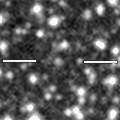
|
Now it is 17.9 mag (Apr. 21, Toshihiko Ikemura, Hirohisa Sato). It stays observable at 17 mag in good condition from spring to autumn.
Date(TT) R.A. (2000) Decl. Delta r Elong. m1 Best Time(A, h)
May 12 20 58.03 -0 10.4 5.837 5.991 93 17.3 3:22 (310, 42)
May 19 20 59.79 0 16.2 5.735 5.990 99 17.2 3:14 (314, 45)
|
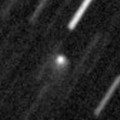
|
Now it is 16.8 mag (Apr. 21, Alexander Baransky). It will be fading after this, and it will be fainter than 18 mag in July.
Date(TT) R.A. (2000) Decl. Delta r Elong. m1 Best Time(A, h)
May 12 11 28.86 26 14.6 5.335 5.754 109 17.3 20:31 ( 30, 80)
May 19 11 25.78 26 39.5 5.475 5.780 102 17.4 20:39 ( 61, 74)
|
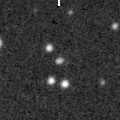
|
Now it is 16.3 mag (Apr. 20, Toshihiko Ikemura, Hirohisa Sato). It is observable at 17 mag in good condition in spring.
Date(TT) R.A. (2000) Decl. Delta r Elong. m1 Best Time(A, h)
May 12 12 43.10 -9 24.8 1.656 2.532 142 17.5 21:23 ( 0, 46)
May 19 12 43.11 -9 3.0 1.710 2.534 135 17.7 20:55 ( 0, 46)
|
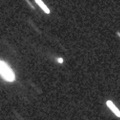
|
Now it is 16.9 mag (Apr. 12, Toshihiko Ikemura, Hirohisa Sato). It will be fading gradually after this.
Date(TT) R.A. (2000) Decl. Delta r Elong. m1 Best Time(A, h)
May 12 10 38.24 36 15.9 8.168 8.322 95 17.6 20:31 (100, 75)
May 19 10 36.69 35 36.1 8.296 8.343 89 17.6 20:39 ( 99, 68)
|

|
Now it is 19.3 mag (Apr. 20, Toshihiko Ikemura, Hirohisa Sato). It was predicted to be observable at 17.5 mag in good condition from spring to summer. But recently, it is fainter than predicted.
Date(TT) R.A. (2000) Decl. Delta r Elong. m1 Best Time(A, h)
May 12 16 25.62 -7 52.7 2.917 3.881 159 17.6 1:09 ( 0, 47)
May 19 16 21.48 -7 48.8 2.896 3.881 164 17.6 0:37 ( 0, 47)
|
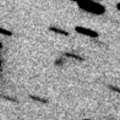
|
Now it is 17.5 mag (Apr. 21, Catalina Sky Survey). It stays observable at 17-18 mag in good condition for a while.
Date(TT) R.A. (2000) Decl. Delta r Elong. m1 Best Time(A, h)
May 12 14 48.30 -3 33.2 1.865 2.850 164 17.8 23:27 ( 0, 51)
May 19 14 43.03 -3 26.5 1.922 2.886 158 17.9 22:54 ( 0, 51)
|
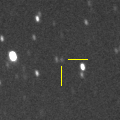
|
Now it is 17.8 mag (Apr. 6, J. Drummond). It stays 18 mag from 2018 to 2020. It is observable in good condition in the Southern Hemisphere. It locates extremely low in the Northern Hemisphere.
Date(TT) R.A. (2000) Decl. Delta r Elong. m1 Best Time(A, h)
May 12 12 20.38 -36 35.6 3.707 4.505 137 17.9 21:00 ( 0, 18)
May 19 12 17.98 -36 4.1 3.753 4.500 132 17.9 20:39 ( 2, 19)
|
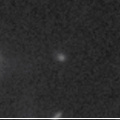
|
Now it is 16.6 mag (Apr. 19, Toshihiko Ikemura, Hirohisa Sato). It is observable at 18 mag in good condition in spring.
Date(TT) R.A. (2000) Decl. Delta r Elong. m1 Best Time(A, h)
May 12 12 18.57 1 12.7 1.340 2.157 132 17.9 20:58 ( 0, 56)
May 19 12 20.08 1 35.5 1.382 2.141 126 18.0 20:39 ( 3, 56)
|
|
![]()
 48P/Johnson
48P/Johnson 29P/Schwassmann-Wachmann 1
29P/Schwassmann-Wachmann 1 37P/Forbes
37P/Forbes 21P/Giacobini-Zinner
21P/Giacobini-Zinner C/2017 M4 ( ATLAS )
C/2017 M4 ( ATLAS ) C/2015 V2 ( Johnson )
C/2015 V2 ( Johnson ) C/2017 S3 ( PanSTARRS )
C/2017 S3 ( PanSTARRS ) C/2017 B3 ( LINEAR )
C/2017 B3 ( LINEAR ) 364P/2018 A2 ( PanSTARRS )
364P/2018 A2 ( PanSTARRS ) 65P/Gunn
65P/Gunn C/2015 VL62 ( Lemmon-Yeung-PanSTARRS )
C/2015 VL62 ( Lemmon-Yeung-PanSTARRS ) C/2015 V1 ( PanSTARRS )
C/2015 V1 ( PanSTARRS ) (3552) Don Quixote
(3552) Don Quixote C/2016 A1 ( PanSTARRS )
C/2016 A1 ( PanSTARRS ) 74P/Smirnova-Chernykh
74P/Smirnova-Chernykh C/2017 K4 ( ATLAS )
C/2017 K4 ( ATLAS ) C/2017 S6 ( Catalina )
C/2017 S6 ( Catalina ) C/2014 B1 ( Schwartz )
C/2014 B1 ( Schwartz ) 64P/Swift-Gehrels
64P/Swift-Gehrels C/2018 C2 ( Lemmon )
C/2018 C2 ( Lemmon ) C/2018 A3 ( ATLAS )
C/2018 A3 ( ATLAS ) 62P/Tsuchinshan 1
62P/Tsuchinshan 1 C/2014 OE4 ( PanSTARRS )
C/2014 OE4 ( PanSTARRS ) C/2017 E3 ( PanSTARRS )
C/2017 E3 ( PanSTARRS ) C/2017 M5 ( TOTAS )
C/2017 M5 ( TOTAS ) C/2017 D3 ( ATLAS )
C/2017 D3 ( ATLAS ) 143P/Kowal-Mrkos
143P/Kowal-Mrkos C/2014 R3 ( PanSTARRS )
C/2014 R3 ( PanSTARRS ) 187P/LINEAR
187P/LINEAR 30P/Reinmuth 1
30P/Reinmuth 1 186P/Garradd
186P/Garradd 105P/Singer Brewster
105P/Singer Brewster![]()


































